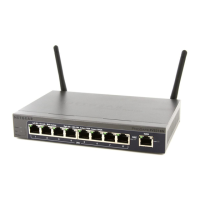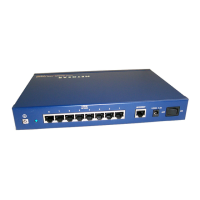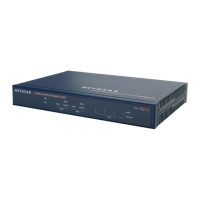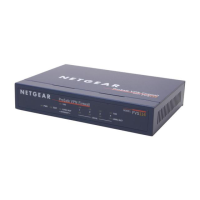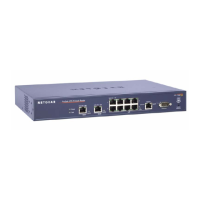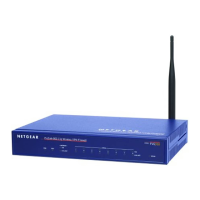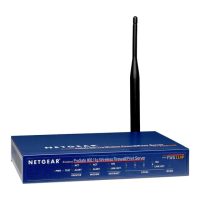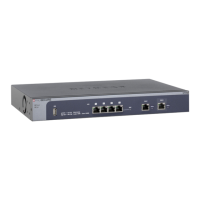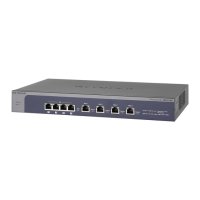Network and System Management
325
NETGEAR ProSAFE VPN Firewall FVS318G v2
For information about how to enable the DMZ port, see Enable and Configure the DMZ Port
for IPv4 and IPv6 Traffic on page 96
. For information about how to configure DMZ traffic
rules, see Configure DMZ WAN Rules on page 144
.
Exposed Hosts
Specifying an exposed host allows you to set up a computer or server that is available to
anyone on the Internet for services that you did not yet define. For an example of how to set
up an exposed host, see IPv4 LAN WAN or IPv4 DMZ WAN Inbound Rule: Specifying an
Exposed Host on page
165.
VPN and L2TP Tunnels
The VPN firewall supports site-to-site IPSec VPN tunnels, and L2TP tunnels. Each tunnel
requires extensive processing for encryption and authentication, thereby increasing traffic
through the WAN ports. For information about IPSec VPN and L2TP tunnels, see Chapter 5,
Virtual Private Networking Using IPSe
c and L2TP Connections.
Use QoS and Bandwidth Assignment to Shift the Traffic Mix
By setting the QoS priority and assigning bandwidth profiles to firewall rules, you can shift the
traffic mix to aim for optimum performance of the VPN firewall.
Set QoS Priorities
The QoS priority settings determine the Quality of Service for the traffic passing through the
VPN firewall. You can assign a QoS priority to LAN WAN and DMZ WAN outbound firewall
rules. The QoS is set individually for each firewall rule. You can change the mix of traffic
through the WAN ports by granting some services a higher priority than others:
• Y
ou can accept the default priority defined by the service itself by not chang
ing its QoS
priority.
• You can change the priority to a higher or lower value than its defa
ult setting to give the
service higher or lower priority than it would otherwise be assigned.
For more information about QoS profiles, see Preconfigured Quality of Service Profiles on
page 183.
Assign Bandwidth Profiles
When you set the QoS priority, the WAN bandwidth does not change. You change the WAN
bandwidth that is assigned to a service or application by applying a bandwidth profile to a
LAN WAN inbound or outbound rule. The purpose of bandwidth profiles is to provide a
method for allocating and limiting traffic, thus allocating LAN users sufficient bandwidth while
preventing them from consuming all the bandwidth on your WAN links. For more information
about bandwidth profiles, see Create Bandwidth Profiles on page
180.

